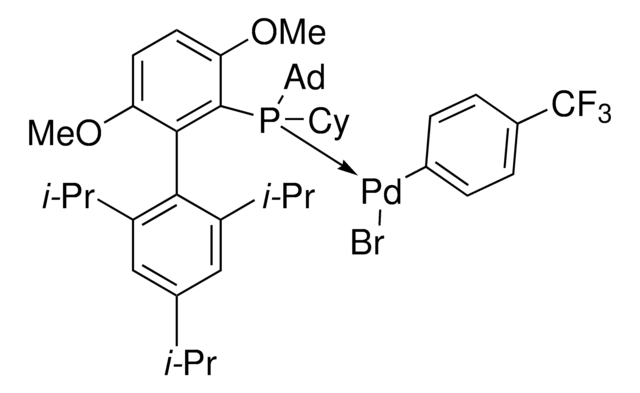921726
Bis-Diazirine polymer crosslinker
Synonym(s):
3,3′-((Perfluoropropane-2,2-diyl)bis(4,1-phenylene))bis(3-(trifluoromethyl)-3H-diazirine), BondLynx Gen-I
About This Item
Recommended Products
storage temp.
2-8°C
Quality Level
Application
Our bis-diazirine molecule allow remarkably efficient and stable perovskite solar cells. A study showed it contribution to retaining nearly 99% of their initial efficiency even after 1,000 hours of continuous illumination. At constant heat (60°C) bis-diazirine treated PSCs maintained nearly 98% efficiency after 600 hours of continuous operation, whilst untreated lost 27% efficiency under the same conditions. Overall, bis-diazirine treated PSCs achieved a high certified efficiency of over 24% with long operational stability over 1,000 hours[1].
Further, it can be used in adhesive and textile strengthening applications. Diazirine crosslinkers don’t distinguish between polymer substrates and can be used to bond dissimilar materials like PP and PE together into rigid thermoset plastics. It has been demonstrated to bond polypropylene, high density polyethylene (HDPE), and other polymers to each other, and to strengthen ultrahigh molecular weight polyethylene (UHMWPE) textiles by crosslinking between individual fibers. Bis-diazirines may also have utility in tissue bonding applications.
Caution
Yoshida correlations and mechanical testing indicate that the product is not a likely explosion hazard, but all diazirines should be handled as potential shock-sensitive materials.
Other Notes
signalword
Danger
hcodes
Hazard Classifications
Org. Perox. C
Storage Class
5.2 - Organic peroxides and self-reacting hazardous materials
wgk_germany
WGK 3
flash_point_f
Not applicable
flash_point_c
Not applicable
Choose from one of the most recent versions:
Certificates of Analysis (COA)
Don't see the Right Version?
If you require a particular version, you can look up a specific certificate by the Lot or Batch number.
Already Own This Product?
Find documentation for the products that you have recently purchased in the Document Library.
Our team of scientists has experience in all areas of research including Life Science, Material Science, Chemical Synthesis, Chromatography, Analytical and many others.
Contact Technical Service









